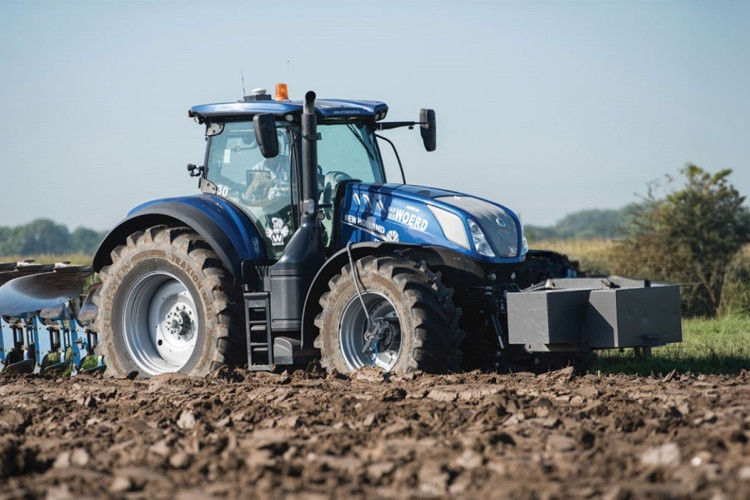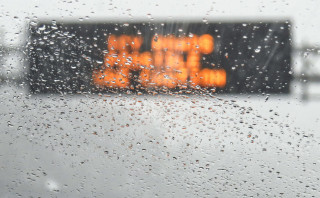Common road hazards in a New Zealand winter
Winter. It can be a right pain. Normally safe roads become slippery roads. Every journey takes that little bit longer. Nipping out to the dairy becomes a mini mission and going anywhere significant takes more planning than you have time for.
But getting there and back safely is what it's all about, right? So, it’s time to rehash a few old points and tips for winter driving, even if you have read it all before. You never know, there just might be a new morsel of information in here you didn't know (we said ‘might’).
NZ Road Hazards in Winter
They are many and frequent. We don’t like them much but we have to be aware of them.
1. Black Ice
The scourge of winter driving for motorists everywhere. Black ice is actually a very fine and perfect sheet of ice. It’s transparent, so the trouble is you can’t see it. It will likely appear to be an innocent puddle, thanks to the ice reflecting light much like a puddle does. If you see wet looking patches on an otherwise fine (but cold) day, then take caution. You’re especially likely to get black ice in areas shaded from the sun, rural roads, or on bridges (as the road temperature can be a lot cooler). No matter what you do and who you are, the roads can be a bit much though... as this grit truck found out.
2. Snow
Pretty isn’t it? Only it’s pretty dangerous too. If there’s snow on the roads then you might be better off just avoiding driving altogether. Take the opportunity to make some snow angels in the garden and throw snowballs at things (kids, the neighbours cat, garden gnomes etc). If you do have to venture out then be cautious. Drive slow and carefully, remembering your traction is compromised so your ability to stop and turn are very much impaired. For more detailed advice, have a read of this.
3. Fog
When the fog descends, so does the number of metres you can see in front of the car. Try and resist the temptation to use full beam lights in fog. You’ll just make matters worse as it’ll do nothing more than increase the reflection from the fog mist, reducing visibility further. Your vehicle will most likely have fog lights which are designed to help. They are turned on independently of your normal lights and are marked by a special symbol.
4. Hail
Trying to control your car in serious hail can be like driving on marbles. As you’d expect, braking and cornering become an issue so you need to slow down and take it easy. Not to mention the probable reduction in vision impairing your journey. Finally, there’s also the damage it can cause. If the hail is amazingly heavy you might be better off to pull over and find shelter for your motor. If you can, try and park facing the oncoming hail. Your windscreen is designed to be tough. Side windows are not and can be damaged more easily.
5. Rain
A light sprinkling will grease up a winter road and impair traction. Slightly heavier rain will do that and reduce visibility. Heavier still and standing water on the road increases your chances of aquaplaning as your tyres lose grip, the water forming a barrier between tyre and road. Sometimes - and most likely about the time you're on Auckland's Southern Motorway - the rain becomes so exceptionally heavy you can’t see the vehicle in front. In all cases, caution is advised. As is a reduction in speed. Rule of thumb - the heavier the rain the greater the need to reduce speed.
6. Repeated Frost
There are always those shady spots that never seem to get free of Jack Frost’s grip in winter (take a walk down by the river in Arrowtown in winter and permafrost is there in all its glory). On the roads, these are the little shady spots you often find under think foliage and tree cover. Or where a hill or building blocks the sun. It often means there’s some slippery stuff and caution is needed.
7. Hoar Frost
A stunning, magical winter wonderland is created by hoarfrost. This is when ice crystals form on objects exposed to free air. It turns the blades of grass, fencelines, branches and leaves, all a wonderful picture postcard white. The main danger here is distraction as you get lost in the marvel of it all when driving.
8. Sunstrike
The low morning and afternoon sun can be quite blinding. In extreme circumstances, it’ll blind you pretty much outright. Precautions such as avoiding travelling at certain times of the day or taking a route with shade are pretty impractical (although worthwhile if you can). What you can do is make sure your windscreen is clean and you have a pair of polarized sunglasses handy. If you’re epileptic, beware of the “Strobe effect” of low sunlight through standing trees.
9. Road Slips
If you’re contemplating driving in or after a downpour, try to avoid roads that are known slip risks. Recent slips have included SH6 near Whataroa, and SH2 through the Waimana Gorge while perhaps the most slip-prone road we know of - the Manawatu Gorge - remains permanently closed. Check the highway report so you know of reported hazards before you head out. If you really have to go and there aren’t any good options for the route, make sure you have plenty of warm layers and sufficient food and water - if you get stuck you want to be prepared.
10. Grit
The very stuff that's supposed to stop you skidding... can also cause you to lose control. Grit is essentially like a layer of fine gravel being applied to the road. It helps eat into ice and snow but its still gravel. It’s all too easy to get over confident when you can see the road has been gritted and end up sliding around a bit.
The NZ Roads most affected by Winter Conditions
The Desert Road
One of New Zealand’s iconic journeys, the Desert Road crosses the North Island’s high Central Plateau, providing stunning views across lonely high country tussock land to the imposing peaks of Ruapehu and Nguaruhoe. Skirting Tongariro National Park, it’s the most direct route through the Central North Island – but you’ll need to take extra care in winter. Its elevation of 1074m means snow and ice can catch out the unwary motorist, making it the most frequently closed road in the North Island. It’s no surprise this isolated spot is used by the New Zealand Army for their military training. The small town of Waiouru on the road’s southern end (population 920) is home to not only the Waiouru Military Camp but also the National Army Museum.
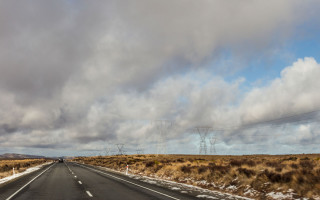
Crown Range
With the surrounding hills covered in alpine tussock, it’s a beautiful and relatively short journey that crosses the mountain range between Queenstown and Wanaka. Hairpin bends and a spectacular view back over Queenstown, Lake Wakatipu and the surrounding district, including planes taking off far below. But beware... there are few passing opportunities. The motorhome in front of you may be travelling very slowly but don’t rush into overtaking. This road is quote notorious for a reason.
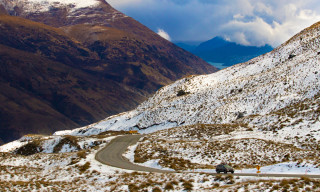
Arthurs Pass
The highest and according to the people in the area, the most spectacular of the Southern Alps passes... and who are we to disagree. Takes in the Otira Viaduct, an exceptional 440 metre-long engineering feat that required 25M deep foundations before the engineers found something solid under all that mountain shingle.
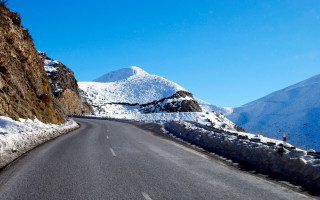
Lindis Pass
Takes you through a beautiful, albeit barren wilderness and links the MacKenzie Basin with Central Otago. As of last year it got it’s very own web cam.
Milford Road
This route takes you from Te Anau to the famous and beautiful Milford Sound. There aren’t many good options for getting out if the road closes after you, so NZTA generally acts preemptively and closes the road if the forecast is looking bad. If the snow drifts are building up on the surrounding areas, you may find the road is closed while the snow is dynamited off… thus greatly minimising the risk of being caught in an avalanche. You’ll still see a few “no-stopping” signs in winter though. Again, this is a popular tourist route so be prepared for slow-moving vehicles and only pass when it is obviously safe to do so.
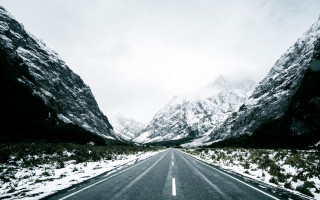
Lewis Pass
The northernmost of the Southern Alps passes, this road shot to fame and developed legendary potholes when the Kaikoura road was closed due to the earthquake of November 2016. More recently heavy rain and erosion reduced parts of the road to one lane. It’s a pleasant road if you need to get from Hanmer Springs to Reefton but check the highway report before you leave.
Burkes Pass
This lesser-known South Island mountain pass runs from Fairlie to Tekapo and into the stunning landscape of the MacKenzie basin. Officially part of State Highway 8, it also runs through a tiny village of the same name. Again, a place of extremes in both summer and winter, when deep snow and repeated closures are to be expected.
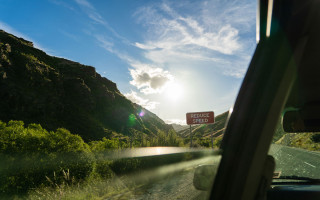
Dansey's Pass
Another South Island mountain pass and a great way to get to Naseby, should you wish to. Recent census data had Naseby’s population at 120 people, up 6 from the previous census. In summer the population can swell to several thousand people, so winter is a great chance to check out the place just as it is. There’s a reason why most people don’t drop into Naseby in the winter though: the average July temperature in Naseby is 2.1 °C. But it does have a curling rink!
The Pigroot
An odd but charming name for SH85 between Palmerston and Ranfurly. The highway takes you through old gold mining country and some of NZ’s most extreme climatic conditions, in both summer and winter. If you do attempt this road in winter, be prepared for snow and black ice.
Napier-Taupo Road
Just the second North Island road on our list, the Napier-Taupo road rises to 760m. According to the Hastings District Council, the road follows a pre-European walking trail and is loaded with places of historical significance – and if it’s a good day you should catch stunning views of Mount Ngauruhoe, Mount Tongariro and Mount Ruapehu. Again, check the weather report as fortunately there are other ways around should it be looking difficult.
Make Sure Your Vehicle is Safe
Keeping your vehicle ready for winter is essential. Working to a simple checklist will help. Some wonderful people have even prepared a pretty decent one for you here. In short, you need to keep up the basic maintenance and checks. That’s because in winter, any fault is more likely to be amplified and presents a potentially greater risk. Window wipers that don’t clear the windscreen properly might not be a major issue during during summer, but in a wintry downpour, they’ll really hamper your driving.
Check Your Tyre Tread
This is a blog on a tyre website after all! Still, please check your tyre tread. It’s what keeps you in contact with the road. So when Winter throws ice, frost and copious amounts of rain at you, all of which tests tyre tread performance...you want as much tread on your tyres as possible. Yes, your tyres might well be above the legal limit but that doesn’t mean they’re performing for you. The MTA has raised this issue and suggests replacing tyres when they get down to 3mm. They make their compelling case here.
We hope some of this information was useful. We know you have probably read similar stuff on winter driving before but a reminder is always good. Winter is an amazing time of year for so many reasons. But it comes at a cost. Be careful and make sure that cost is not personally high to you or anyone around you.
Do you have any tips for driving in a New Zealand Winter? We’d love to hear from you! Get in touch with the team and we’ll post a follow up piece with your ideas.
Useful Reference Sites:
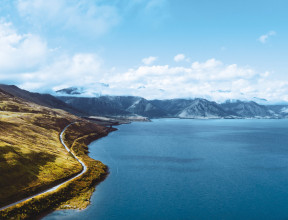
Tyres for wherever you're going, whenever.
More tips and articles
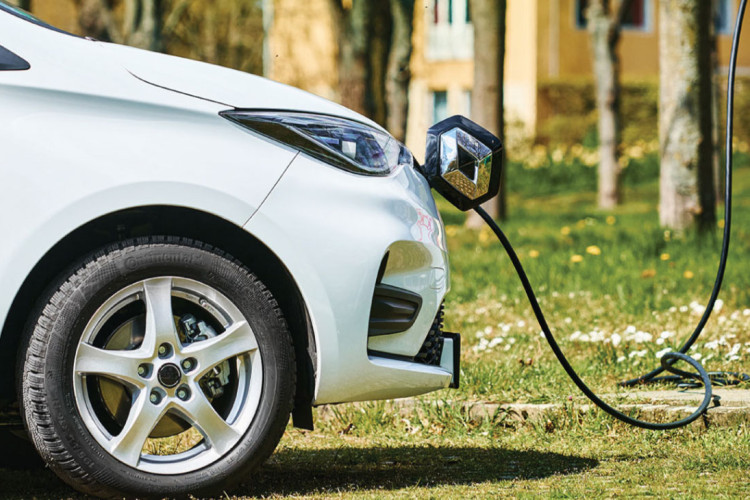
Tyres for Electric Vehicles
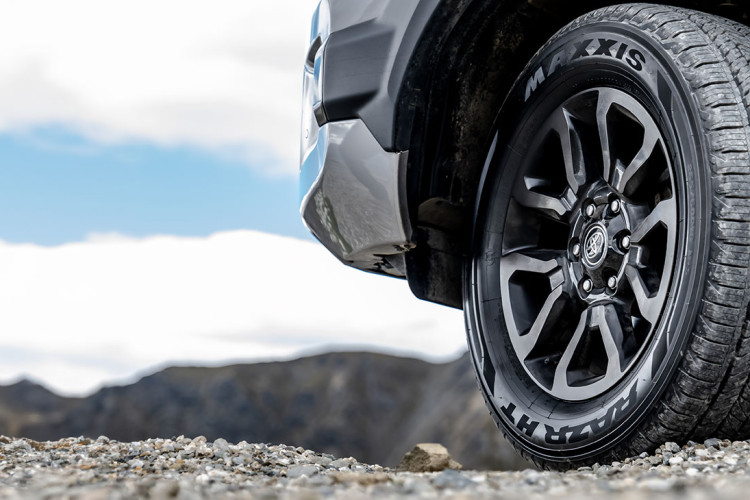
Product Spotlight:
Maxxis HT780 RAZR HT
